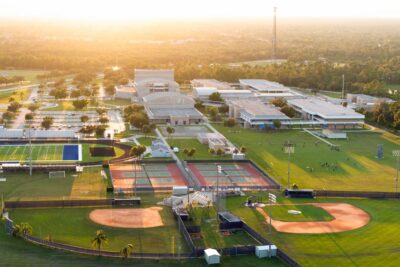The evolution of student success
How did we get here?
This is perhaps one of one of the most basic, most human questions. We look to the past to understand not only where we came from, but also to define who we are now and what we might become.
In my own past, I was a graduate student studying paleontology and evolutionary theory, a field devoted entirely to answering the question “How did we get here?” Most of us think of biological evolution as a process that slowly shapes a species through natural selection, generation after generation. But take a step back and you see a bigger picture of the origin, diversification, and extinction of entire taxonomic groups going back to the dawn of life on the planet. This larger pattern is called “macroevolution,” and it reveals the fuller tapestry of the history of life on Earth.
Our own field of student success is undergoing its own macroevolution: expanding, transforming, and becoming more complex. So, how did we get here? I wondered if we could apply some of the same principles used to study evolutionary biology to the big trends in the evolution of student success.
First we needed to build a “fossil record” of sorts—a history of what happened. Fortunately, we had access to two invaluable resources: a robust academic literature and EAB’s library of 200+ student success practices gathered over the last 10 years. The practices became our “species,” grouped into “lineages” based on the problems they were intended to solve. We then placed each lineage on a timeline based on when it first appeared. In this way, we were able to map the evolution of student success.
Three big themes became apparent.
1. Student success practices build over time, but they don’t go away
There doesn’t seem to be much “extinction” in the evolution of student success, only diversification. The earliest student success theories emerged in the 1970s, with Spady and Tinto’s work on “student integration”—what we now call student engagement. We still talk about student engagement today, although these practices are increasingly based on technology.
The 1980s brought the advent of enrollment management, and with it the realization that an achievement gap exists for certain demographics. Today, we still think about programs for “special populations,” although we’ve expanded beyond just demographics to include programs for groups like first-generation students, transfer students, and veterans.
The focus in the 1990s shifted to the first-year experience, and with it came a major investment in professional advisors. Later, in the 2000s, we realized that advisors were best positioned to monitor student progress, engage in timely interventions, and connect students to the resources they need. We equipped them with degree audits, early warning systems, and coordinated care networks, and they evolved into student success specialists.
2. The pace of change is accelerating
We were surprised and amazed to see the sharp upward trajectory of the evolutionary curve as a large number of recent “lineages” have entered the space, each representing a new family of practices. When biologists see big change like this, it is usually because of a major shift in the environment. We think that might be what is happening here, driven by the lasting effects of the Great Recession.
During the Recession, the share of Pell-eligible undergraduates increased. These students are less likely to be from affluent areas, less likely to be well-prepared, and more likely to be the first in their family to attend college. In short, they need a lot more support and guidance than their counterparts from decades past. As a result, we’ve seen a dramatic expansion in what EAB calls “next-generation advising.”
State funding pulled back during the Recession and for the most part has not returned, putting additional tuition burden on students and families. The result has been an uptick in public criticism over the cost of college. In response, many schools have focused on reducing cost by shortening time to degree. Practices pertaining to degree progress are the most voluminous and fastest growing in the EAB library.
Lastly, we all know that recent graduates had a hard time finding jobs during the Recession, but what is less well known is that levels of unemployment and underemployment still remain near Recession-era highs. This has added a new piece to the student success puzzle: ensuring that students achieve a desirable post-graduate outcome. For most students, that means a greater investment in career development, another quickly growing part of our library.
3. The definition of ‘student success’ is itself evolving
Years ago, we used to think about student success in terms of at-risk demographics, or first-to-second year retention. Now a larger definition has emerged: graduate more students, at lower cost, with better outcomes. This is what some have called ensuring a “return on education,” putting student success squarely at the core of the mission of every college and university. We plan to write more about this over the course of 2017.

More Blogs

Beyond ROI: What the New Fed Data Misses About Higher Ed’s Value Crisis

Revitalize your athletics portfolio in a tumultuous landscape
